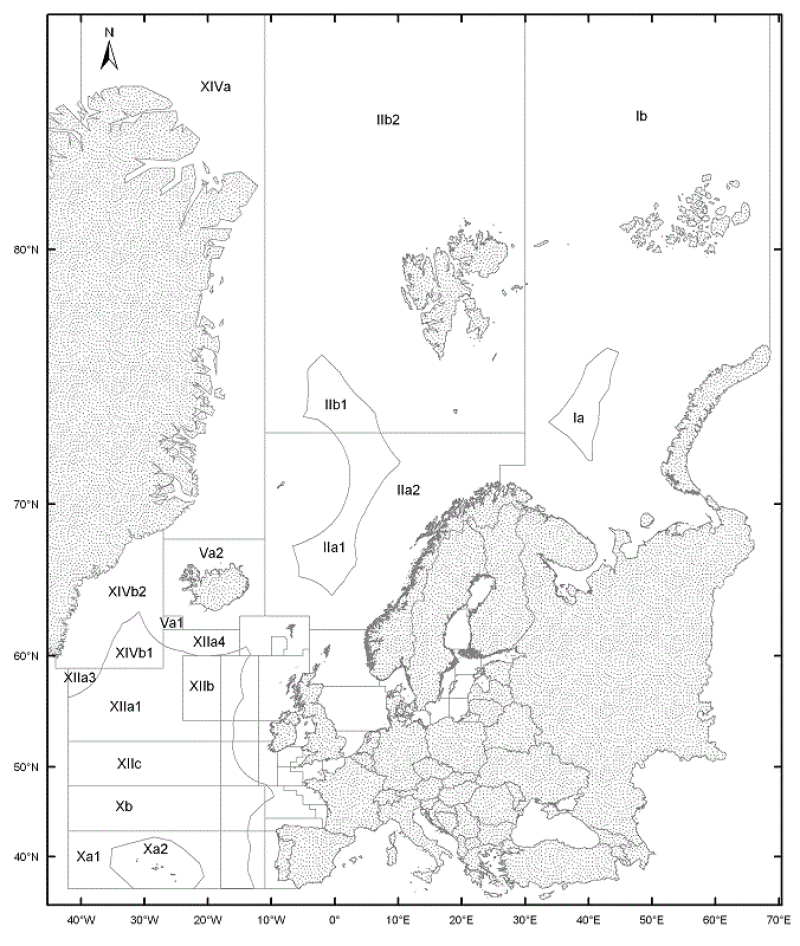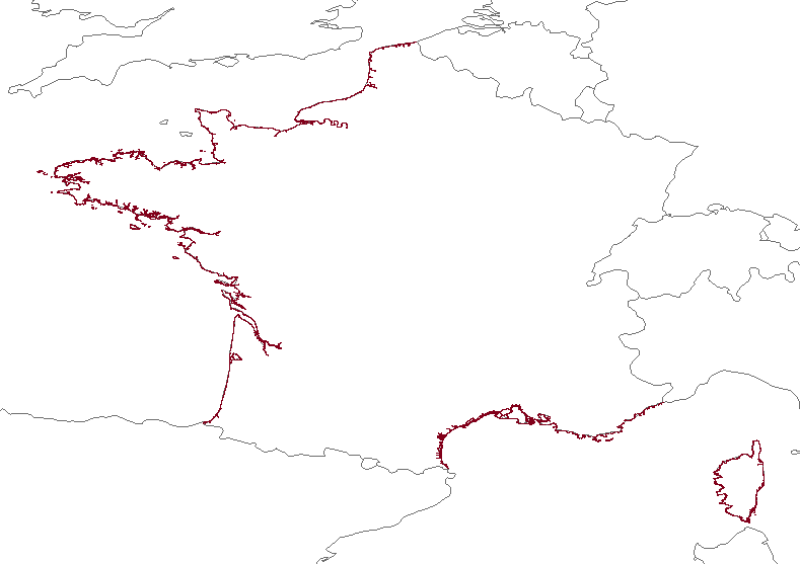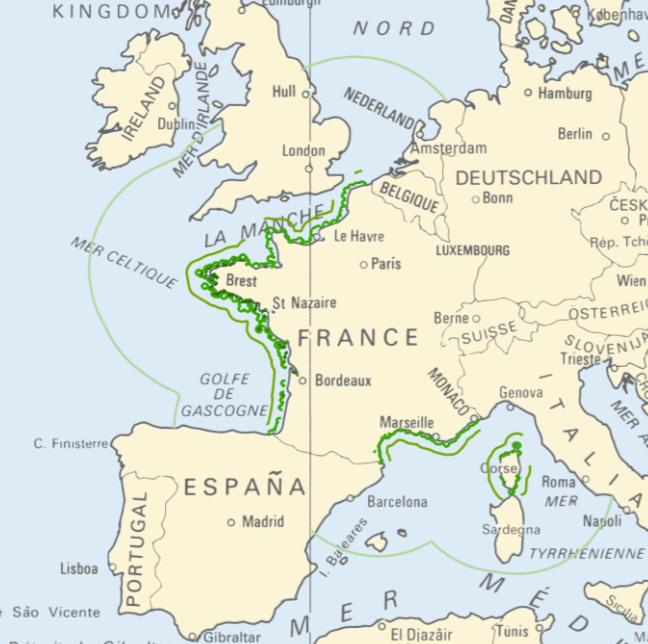Boundaries
Type of resources
Available actions
Topics
Keywords
Contact for the resource
Provided by
Years
Formats
Representation types
Update frequencies
status
Scale
-

The EMODnet Bathymetry World Coastline is available as a WFS service from EMODnet Bathymetry. The service URL is: https://ows.emodnet-bathymetry.eu/wfs. The layer contains vector lines derived from land polygons available from OpenStreetMap. The original source url is https://osmdata.openstreetmap.de/. Parts of these polygons have been modified for use in EMODnet Bathymetry. In addition to the OSM EMODnet default coastline, three sub-layers are available as part of the EMODnet world coastline service. These sub-layers contain the best-estimate coastlines for Europe determined by Dutch research institute Deltares from satellite data (typically Sentinel-2 and Landsat-8) and in combination with the Global Tide Surge Model (GTSM) processed into digital coastlines for the European seas at LAT (Lowest Astronomical Tide), MSL (Mean-Sea-Level), and MHW (Mean-High-Water). The level of detail is bound to the resolution of the satellite sensor (e.g. 10m for Sentinel-2). The latest December 2020 version now covers the entire coastline of Europe. A detailed paper is available describing the methodology used to determine the three versions of the satellite derived coastline: https://emodnet.ec.europa.eu/sites/emodnet.ec.europa.eu/files/public/20201219_emodnet_bathymetry_satellite_derived_coastline_report.pdf
-
This dataset builds on previous versions of the world's EEZ. In version 9, the 200 nautical miles outer limit was completely recalculated using a higher resolution coastline as a normal baseline (ESRI Countries 2014) and straight baselines, where available. This dataset consists of two shapefiles: polylines that represent the maritime boundaries of the world's countries, the other one is a polygon layer representing the Exclusive Economic Zone of countries. This dataset also contains digital information about treaties, joint regime, and disputed boundaries.
-
This dataset represents the regions for levels 1, 2 and 3 of the Nomenclature of Territorial Units for Statistics (NUTS) for 2016. The NUTS nomenclature is a hierarchical classification of statistical regions and subdivides the EU economic territory into regions of four different levels (NUTS , 1, 2 and 3, moving respectively from larger to smaller territorial units). NUTS 1 is the most aggregated level. An additional Country level (NUTS 0) is also available for countries where the the nation at statistical level does not coincide with the administrative boundaries. For example Mt Athos in Greece and Mellum and Minsener Ogg in Germany. The NUTS classification has been officially established through Regulation (EC) No 2016/2066 of the European Parliament and of the Council and its amendments. A non-official NUTS-like classification has been defined for the EFTA countries and candidate countries. An introduction to the NUTS classification is available here: http://ec.europa.eu/eurostat/web/nuts/overview. This dataset has been created mainly from the EuroBoundary Map v 12 (Eurogeographics) and geographic information from TurkStat for Turkey. The public dataset is available under the Download link indicated below. Available scales are 1M, 3M, 10M, 20M, 60M). The full dataset is available via the EC restricted download link under GISCO.NUTS_2016. Here six scale ranges (100K, 1M, 3M, 10M and 20M, 60M) are available. Coverage is the economic territory of the EU, EFTA countries and candidate countries as in 2013.
-

The ICES Statistical Areas delineates the divisions and subdivisions of FAO Major Fishing area 27
-

-

<strong>This data is not up to date with the order dated 30 August 2021 amending the order dated 23 November 1987 on ship safety, which now raises the limit for category 4 ships to 5 miles from the nearest coast.</strong> The navigation category allocated to a ship is indicated on its shipping license, together with any applicable restrictions. This limit was produced by Shom in application of section II.14 of article 1 of decree no. 84-810 amended on 30 August 1984. Navigation categories are defined in article 110.10 of the rules appended to the order of 23 November 1987 on shipping safety.
-
Le code officiel géographique rassemble les codes et libellés des communes, des cantons, des arrondissements, des départements, des régions, des collectivités d'outre-mer et des pays et territoires étrangers au 1er janvier de chaque année. Le code contient donc 8 jeux de données: - la liste des communes de la métropole et Dom (toutes les communes ayant existé depuis 1943), - la liste des communes existantes au 1 janvier 2017, - l'historique des communes, - la liste des cantons, - la liste des arrondissements, - la liste des départements, - la liste des régions, - la liste des pays et territoires étrangers. --- Etat de disponibilité de la donnée : - Data.gouv et INSEE : données téléchargeables au format texte et en licence ouverte (si diffusion depuis les 2 sites). Mise à jour annuelle. - PIGMA : "Liste des cantons" (2014) et "Liste des départements" (2014) téléchargeables au format PDF et sous-restriction du droit moral. Aucune fréquence de mise à jour. - Géocatalogue : "Liste des communes existantes au 1 janvier 2017", "Liste des départements" et "Liste des régions" (2016) téléchargeables au format csv ou texte. Aucune fréquence de mise à jour.
-
Limits defining ship classes based on their assigned operating maritime zones. These limits were produced by CEREMA in application of section II.14 of article 1 of decree no. 200945 amended on 30 August 1984. Navigation categories are defined in article 223.2 of the rules appended to the order of 23 November 1987 on shipping safety.
-
Pôles de la CAPB correspondant aux anciens EPCI
-
Information layer containing the SAR Zones (Search and Rescue). This layer contains a description of the French search and rescue (SAR) areas and the location of the associated Maritime Rescue Coordination Center (MRCC). it covers the areas of responsibility of France. The layer was produced by the Shom pursuant to the Circular Circular of the International Maritime Organization (IMO No. SAR.8 / Circ.4 of 1 December 2012).
 Catalogue PIGMA
Catalogue PIGMA